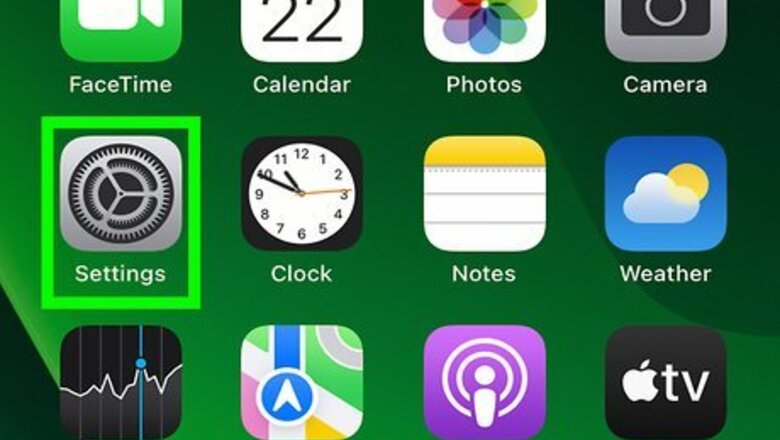
views
- To prevent your iPhone or iPad from using AirPlay automatically, go to Settings > General > AirPlay & Handoff, tap "Automatically AirPlay," then choose "Never."
- Stop people from using AirPlay on your Apple TV in Settings > AirPlay and HomeKit.
- You can disconnect from AirPlay on iPhone, iPad, or Mac by tapping "Screen Mirroring" in Control Center, and selecting "Stop Mirroring" or selecting the display.
Turn Off Automatic AirPlay on iPhone & iPad

Open your iPhone or iPad's Settings iPhone Settings App Icon. If you keep accidentally AirPlaying music or video to other devices, such as to your TV or speaker, disabling automatic AirPlay is easy.
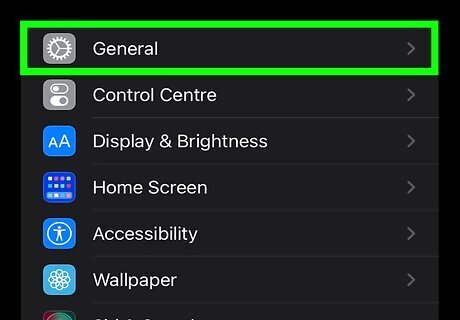
Tap General. You'll see this atop the third group of settings.

Tap AirPlay & Handoff. This is in the second group of settings.
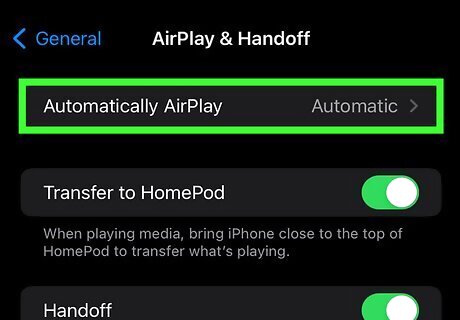
Tap Automatically AirPlay. It's the first setting in the list.
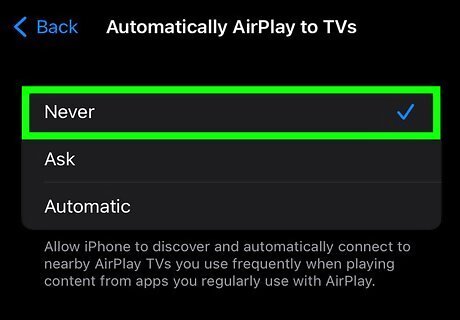
Tap Never. This turns off automatic AirPlay. Alternatively, you can select Ask to be prompted to AirPlay upon launching AirPlay-enabled apps.
Disconnect AirPlay on iPhone & iPad
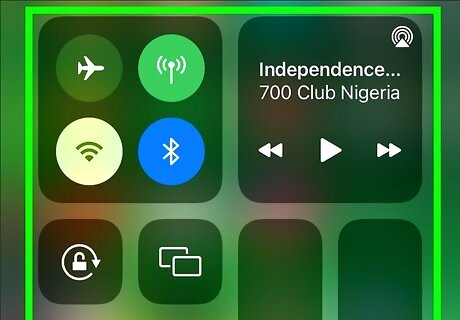
Open the Control Center. If you're mirroring your iPhone or iPad's screen to another device (such as a TV or a monitor) or AirPlaying audio to a speaker, you can disconnect from the Control Center. If your iPhone or iPad has Face ID, swipe down from the top-right corner of the screen to open Control Center. If you have a Home button, swipe up from the bottom of the screen. If you're using an app that has built-in AirPlay (like the Apple TV app) to mirror your screen, tap the AirPlay or casting icon in the app (usually a square with a triangle or a triangle with circles emanating from the top), then tap Turn off AirPlay.
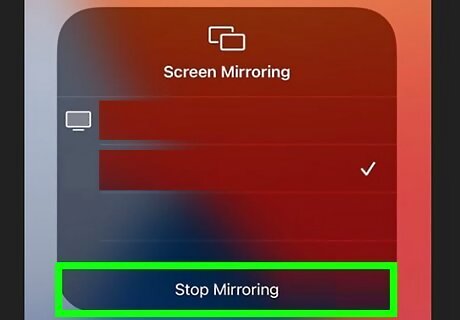
Stop mirroring your screen. If you want to disconnect from a TV, monitor, Mac, or projector you're mirroring to: Tap Screen Mirroring (the tile with two overlapping squares). Tap Stop Mirroring to end your AirPlay session.

Stop playing audio via AirPlay. If your iPhone or iPad is currently playing audio through a speaker or other device using AirPlay, just tap the AirPlay icon on the music tile (the triangle with several circles, then select your iPhone or iPad.
Turn Off AirPlay on a Mac
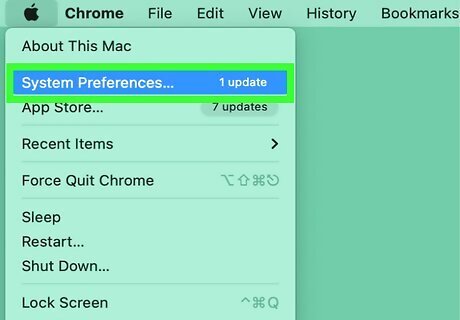
Open your Mac's System Settings. You'll find this in the Apple menu at the top-left corner of the screen. If you don't want to allow other devices to AirPlay to your Mac, you can turn off AirPlay Receiver easily.
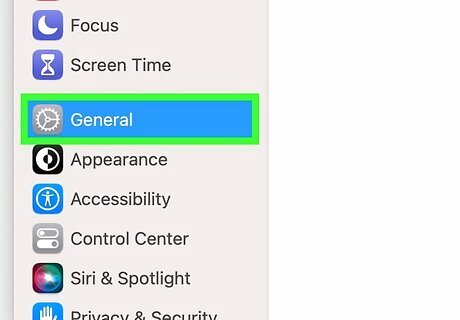
Click General in the left sidebar.
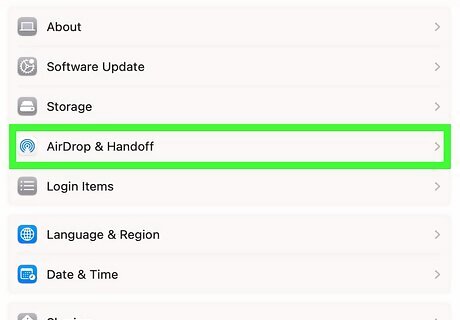
Click AirDrop & Handoff. It's in the right panel, though you may need to scroll down a little to see it.
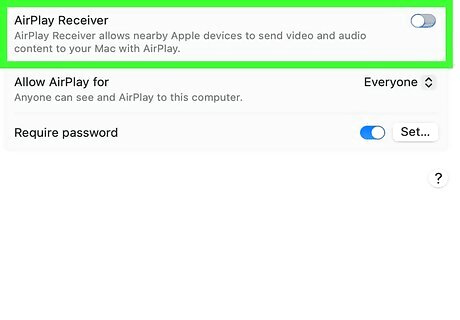
Remove the checkmark from "AirPlay Receiver." If your Mac allows AirPlay from other devices, you'll see a checkmark next to "AirPlay Receiver" in the left panel. Removing this checkmark turns off your Mac's AirPlay Receiver. If you want some devices to be able to AirPlay to your Mac, leave the checkmark intact, and instead change the "Allow AirPlay for" option to Current user (for devices connected to your Apple ID only) or Anyone on the same network (to restrict AirPlay connections to those on your network).
Disconnect AirPlay on a Mac

Click the Control Center icon on your Mac. If you're using AirPlay to mirror your Mac's screen to a second screen or listen to audio through an AirPlay speaker, you can disconnect from Control Center. It's the icon with two sliders in the menu bar at the top-right corner of the screen.
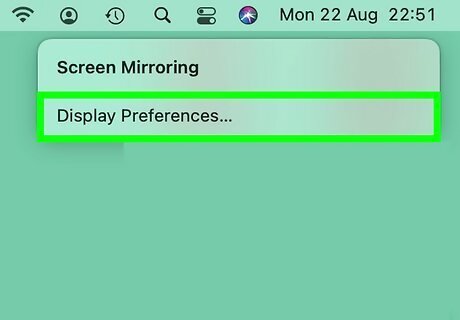
Stop mirroring your Mac's screen. To disconnect: Click Screen Mirroring to display list of devices. Select the device you're mirroring the screen to. This deselects the device, which stops mirroring your screen through AirPlay. If you're using AirPlay to connect your Mac to a second monitor, click Display Preferences on the Screen Mirroring menu, click the "AirPlay Display" menu, and then choose Off.
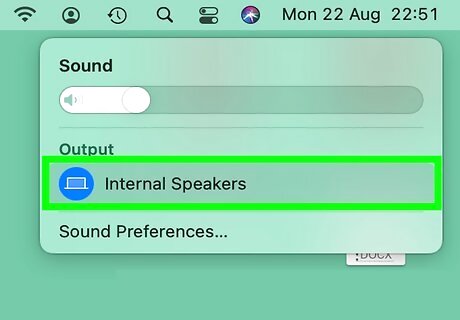
Stop playing audio through AirPlay. If you're playing audio through an AirPlay speaker, follow these steps to disconnect so you can listen on your Mac instead: Click the AirPlay icon. It's the triangle with circles at the top under "Sound." Select your Mac's built-in speaker to return the audio to your internal speaker.
Turn Off AirPlay on Apple TV
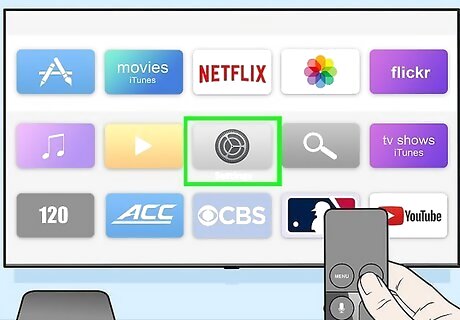
Open your Apple TV's Settings. You can do this by selecting the gear icon on your Apple TV's Home screen. If you don't want random people to be able to AirPlay content to your Apple TV, you can restrict access to AirPlay from your Settings.

Select AirPlay and HomeKit. Additional options will appear.

Select Allow Access. This displays all of the AirPlay permissions you can choose from.
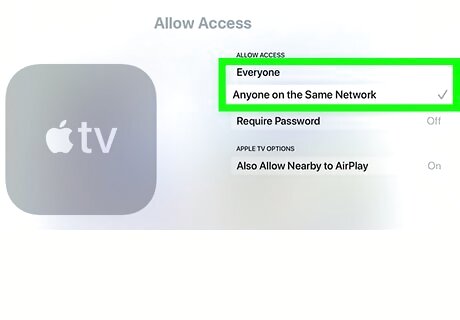
Choose who can AirPlay to your Apple TV. Select Everyone to allow anyone to AirPlay anything they wish. Select Anyone on the Same Network to allow anyone connected to your home's Wi-Fi network to AirPlay. Select Only People Sharing This Home if you've added certain users to Home Sharing and want to allow only those people to stream to this TV. Select Require password to create a password for your Apple TV—only people with this password can AirPlay to this TV. Select Also Allow Nearby to AirPlay to allow anyone near your Apple TV to stream content.



















Comments
0 comment